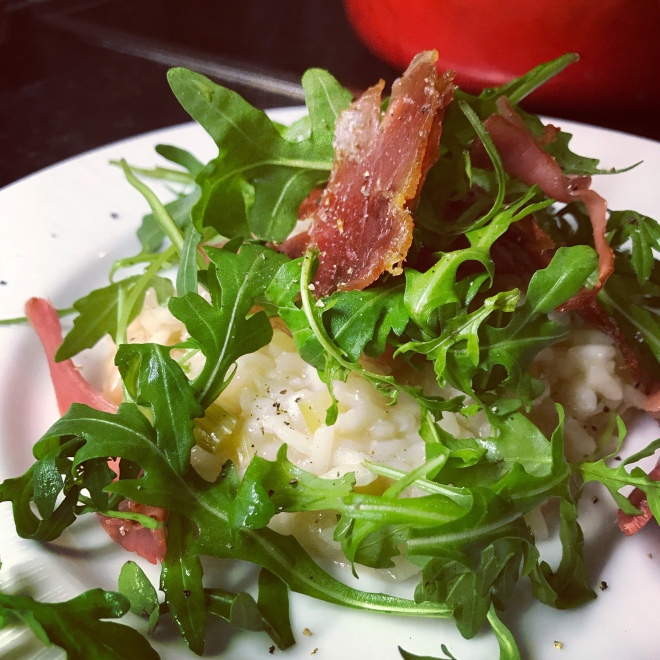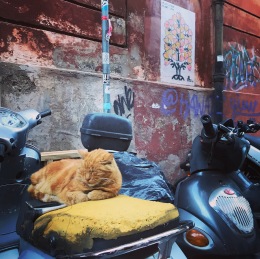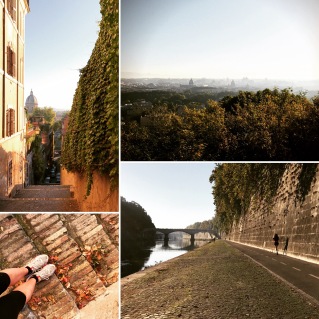
I’m off to North Carolina this weekend to teach another cooking course at the John C Campbell Folk School. Cannot wait to return. It’s a beautiful place, in every sense: a peaceful, creative, supportive environment in the tranquil, green Appalachians. They run all kinds of craft based courses – ironmongery, weaving, painting, wood turning – and students come from far and wide to study for a week or two and soak up the mountain air.
This year my course’s focus is baking. My students and I will be making cakes and biscuits and scones and puddings. And there will be pastry too. Pastry is the diva of the food world, I think. A stunning performer but there’s no rushing it and it must be handled just right. I’ve been practising different short-crusts and rough puffs for months now and have found the recipes that work for me (Leith’s and Dan Lepard, respectively).
Last week, however, I decided to give proper puff pastry a bash. I’d always heard that even professional chefs don’t make their own and assumed it was going to be highly technical, time consuming and, ultimately, not really worth it. Good puff pastry is available in the shops, after all. But I was wrong on almost every count.
Following the Bourke Street Bakery recipe (superb book, by the way), it turns out that the process of laminating the butter into the flour is pretty straight forward. It was time consuming in that I had to start 24 hours in advance and for the first few hours I was rolling for a short time every 20 minutes, but it wasn’t labour intensive and I could potter about whilst the dough was resting. And the end result? Well, it was phenomenal. Light, buttery, crisp and flaky pastry. I will most certainly be making it again.
I used the pastry to make the following Spiced Chickpea Rolls (based on another recipe from the Bourke Street book) and they were a big hit with everyone who tasted them. Even the most committed carnivore admitted they were better than their more common sausage counter part.
Shop bought puff pastry would work perfectly well here but should you feel the desire to try making your own, instructions can be found here.

Spiced Chickpea Puffs
Makes 10
800g puff pastry
Olive oil
1 large onion, chopped
2 red peppers, chopped
4 garlic cloves, finely chopped
2 tins of chickpeas
1 heaped tspn cumin
1 heaped tspn coriander
½ tspn chilli flakes (optional)
250g fresh spinach
Juice of one lemon
½ tspn salt
3 tblspn tahini
Handful of chopped coriander
1 egg white
Paprika
In a large pan, heat a few tablespoons of olive oil over a medium high heat. Add the onion and saute until starting to soften. Add the peppers and cook for another 5 minutes before adding the garlic. Cook for two more minutes before adding the spices and chickpeas. Reduce heat and cook for 5 minutes more. Stir occasionally and add a tiny bit of water if the mixture sticks at all.
Stir in the spinach and pop a lid on to allow the spinach to wilt. Once wilted, remove from heat and add the lemon juice, tahini and salt.
Spoon half the mixture into a food processor and whizz until a rough paste is formed. Return to pan and mix to combine with whole chickpeas (you want a varied texture). Stir through the coriander and let cool for an hour.
Heat the oven to 200oC.
Gently roll out the puff pastry to 5mm thick and cut into rectangles (slice – don’t press down), approx 15cm x 30 cm. Spoon the mixture onto one side of the pastry then fold over and crimp edges together. Place on baking tray. Repeat until all pastry has been used. (There may be mixture left over – it makes a nice veggie burger.) Brush rolls with egg white and dust lightly with paprika.
Place in oven and turn temperature down to 180oC. Cook for 30 mins then remove from baking tray and place on wire rack in oven. Cook for another 15- 25 mins more until pastry is crisp on top and bottom.
Allow to cool slightly before eating.














































